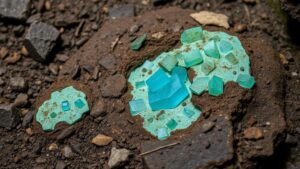The Hunt for Garnet Sands: Discovering Vibrant Crystals in Hidden Valleys
The Hunt for Garnet Sands: Discovering Vibrant Crystals in Hidden Valleys
For rockhounds and mineral collectors, the quest for exquisite specimens often leads to remote and lesser-known locations. Among these treasures lies a unique and coveted find: garnet sands. These vibrant clusters of garnet crystals, often adorning serene valley landscapes, not only captivate collectors but also offer insights into geological processes. This article explores the allure of garnet sands, their formation, and tips on how to successfully hunt for these sparkling gems.
Understanding Garnet Sands
Garnets are a group of silicate minerals that share a common crystal structure and are known for their rich colors and varied compositions. The term garnet sands typically refers to granules that consist primarily of garnet crystals. These minerals often exhibit a deep red hue, although they can also be found in green, yellow, and even colorless varieties.
Scientifically, garnets fall within the isometric crystal system, which means they form in a symmetrical structure, contributing to their distinctive dodecahedral shapes. average size of garnet crystals in sand deposits typically ranges from 0.1 to 2.0 mm. These characteristics make garnet sands not only visually appealing but also significant tools for understanding sedimentary environments.
The Geological Journey of Garnet Sands
The formation of garnet sands is a fascinating process. These minerals usually originate from metamorphic rocks such as schist and gneiss. Over time, weathering and erosion break down these rocks, transporting the garnet crystals into rivers and ultimately into the ocean, where they settle to the sea floor.
In many cases, garnet sands can be found in riverbeds, beaches, and raised valley deposits. Geological studies reveal that garnets are typically concentrated in specific areas due to their density–about 4.1 to 4.3 g/cm³–causing them to settle more readily than lighter minerals during sedimentation.
Finding Garnet Sands: Where to Search
Locating garnet sands requires strategic planning and an understanding of geological formations. Here are some prime locations known for garnet deposits:
- The Appalachian Mountains, particularly in regions such as Virginia and North Carolina.
- The eastern coast of the U.S., including parts of New Jersey and New York.
- Coastal areas of Alaska where glacial activity has transported garnet-rich sediments.
Also, private quarries, often open to rockhounding enthusiasts, can serve as excellent sources for garnet sands. For example, the Hudson River Valley has several sites where amateur collectors can search for garnet-rich gravel.
Tips for Rockhounds and Collectors
As you embark on your hunt for garnet sands, keep these practical tips in mind:
- Research Locally: Use geological surveys and local rockhounding clubs to pinpoint locations known for garnet deposits. Websites such as Mindat.org can be valuable resources.
- Use the Right Tools: Bring along a small shovel, sieve, and containers to collect your finds. A magnifying glass can help you examine garnets more closely.
- Be Mindful of Regulations: Always check the legality of collecting in designated areas to avoid fines. Many regions have rules regarding the amount you can take and the methods you can use.
Real-World Applications of Garnet
The value of garnet extends beyond its aesthetic appeal. In various industries, garnet sands are used for:
- Abrasive Materials: Garnet’s hardness (6.5 to 7.5 on the Mohs hardness scale) makes it an ideal candidate for abrasive materials used in waterjet cutting and sandblasting.
- Water Filtration: The density and angular shape of garnet granules make them effective in water filtration systems for removing particulates.
Conclusion: The Thrill of the Hunt
The hunt for garnet sands is not just about collecting beautiful crystals; it is an adventure steeped in geological history and natural beauty. As you explore the hidden valleys and riverbanks of your chosen locations, remember to appreciate the processes that create these stunning gems. With careful planning, respect for nature, and a spirit of curiosity, your search for garnet sands might just yield a trove of vibrantly colored crystals that contribute to your mineral collection.



